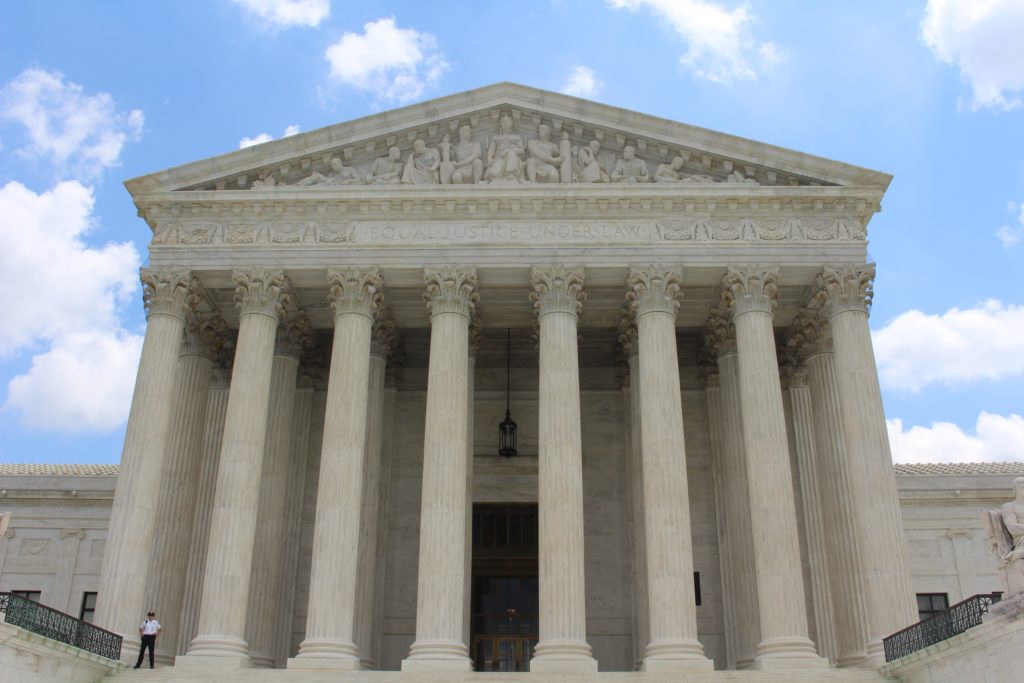
In recent years, the Supreme Court has made clear that the First Amendment applies to trademarks. In Matal v. Tam, the Supreme Court held that the statutory bar on “trademarks that may ‘disparage … or bring … into contemp[t] or disrepute’ any ‘persons, living or dead’” violates the First Amendment.1 In Iancu v. Brunetti the court struck down a bar on “the registration of ‘immoral[ ] or scandalous’ trademarks”, again on First Amendment grounds, determining that the term FUCT could be trademarked.2 In several concurrences in Iancu, justices argued that obscene trademarks can still be barred, due to the traditional obscenity exception to First Amendment protections.3 Justice Sotomayor, joined by Justice Breyer, explicitly stated that the Miller test for obscenity applies to trademarks, and that trademarks which fail the Miller test may still be barred.4 Such an exception makes sense. The Supreme Court has historically recognized that obscenity is not protected speech, and despite criticisms from some justices, is yet to abandon that approach.5
Just how much latitude to reject offensive trademarks does the Miller test offer? The court in Miller employed the test to determine whether advertisements for “illustrated books” were obscene.6 Historically, many materials evaluated for obscenity are works intended as art.7 Trademarks, in contrast, have the purpose of “enable[ing] a business to identify itself as the source of a given product through the adoption of some distinctive mark.”8 How then, should one apply the Miller tests requirement that the work have “serious literary, artistic, political, or scientific value?”9 Unlike anatomical drawings, for instance, a trademark is unlikely to be useful scientifically. Likewise, it would be the rare trademark which, in a few brief words, is able to be of literary value. The categories of political and artistic, however, are more attainable for trademarks seeking protection against being declared obscene. Even short, offensive slogans can have political significance.10 Likewise, a trademark might be of artistic merit. While some jurists have argued that “it is quite impossible to come to an objective assessment of . . . artistic value”, one could certainly imagine an artistically significant logo which would meet the criteria of the Miller test.11
The other aspects of the Miller test are somewhat more straightforward, in as much as trademarks do not present any special challenges above and beyond the normal challenges in determining such things as what the work taken as a whole is, and what the relevant community standards are. The Miller test’s requirement that the court must consider the “work taken as a whole”12 is actually somewhat easier for copyrights than certain other types of works, such as art exhibits. Here, the work to be taken as a whole is simply whatever is to be trademarked, taken together. Since the trademark itself is a discrete work, and is to be granted government protection by itself, the work taken as a whole principle can be applied in a straightforward manner. The final requirements, that the work appeal to a prurient interest and “depict[] or describe[], in a patently offensive way, sexual conduct” according to community standards,13 do not present any challenges peculiar to trademarks. While the determination may be difficult in some cases, the fact that the offending item is a trademark does not make it more difficult. While a business might be well advised to avoid using an offensive image as a trademark to indicate its goods, and so such cases are likely to be rare, it is easy enough to imagine a logo depicting a graphic sexual act in an offensive way.
Just how much protection does the Miller test offer to graphic sexual trademarks? Has Iancu opened up the floodgates, allowing a sea of sexually offensive trademarks to flood in? It has not, at least on constitutional grounds.14 The Miller test provides the government with wide latitude to continue to prohibit sexually explicit trademarks. In particular, due to the commercial nature of trademarks, they are unlikely to possess serious artistic, literary, scientific or political merit in and of themselves, although some may. Therefore, the government will be able to bar them. Certainly this seems to have been the Supreme Court’s intention in Iancu, and it is consonant with the history of First Amendment jurisprudence and the history of the obscenity exception.
Carter Hall is a Second Year Law Student at the Benjamin N. Cardozo School of Law and a Staff
Editor at the Cardozo Arts & Entertainment Law Journal. He is interested in Art Law and the
First Amendment.
- Matal v. Tam, 137 S. Ct. 1744, 1751 (2017).
- Iancu v. Brunetti, 139 S.Ct. 2294 (2019).
- See, e.g., Id. at 2303-04 (Roberts, C.J., concurring).
- Id. at 2311 (Sotomayor, J., concurring in part).
- Pope v. Illinois, 481 U.S. 497, 507 (1987) (Stevens, J., dissenting).
- Miller v. California, 413 U.S. 15, 16 (1973).
- See, e.g., United States v. One Book Called “Ulysses”, 5 F. Supp. 182 (S.D.N.Y. 1933).
- Fireman’s Fund Ins. Co. of Wisc. v. Bradley Corp., 660 N.W. 2d 666, 676 (Wisconsin 2003).
- Miller at 24.
- See F.C.C. v. Pacifica Foundation, 438 U.S. 726, 747 n.25 (1978) (“fuck the draft” is a political statement).
- Pope at 504 (Scalia, J., concurring).
- Miller at 24.
- Id.
- Iancu held that the statutory language is overbroad. If faced with the specific case of an obscene trademark, the Supreme Court could adopt a narrower, constitutional reading of the statute. Alternatively, congress could pass narrower language. See Iancu at 2308 (Sotomayor, J., concurring in part).



